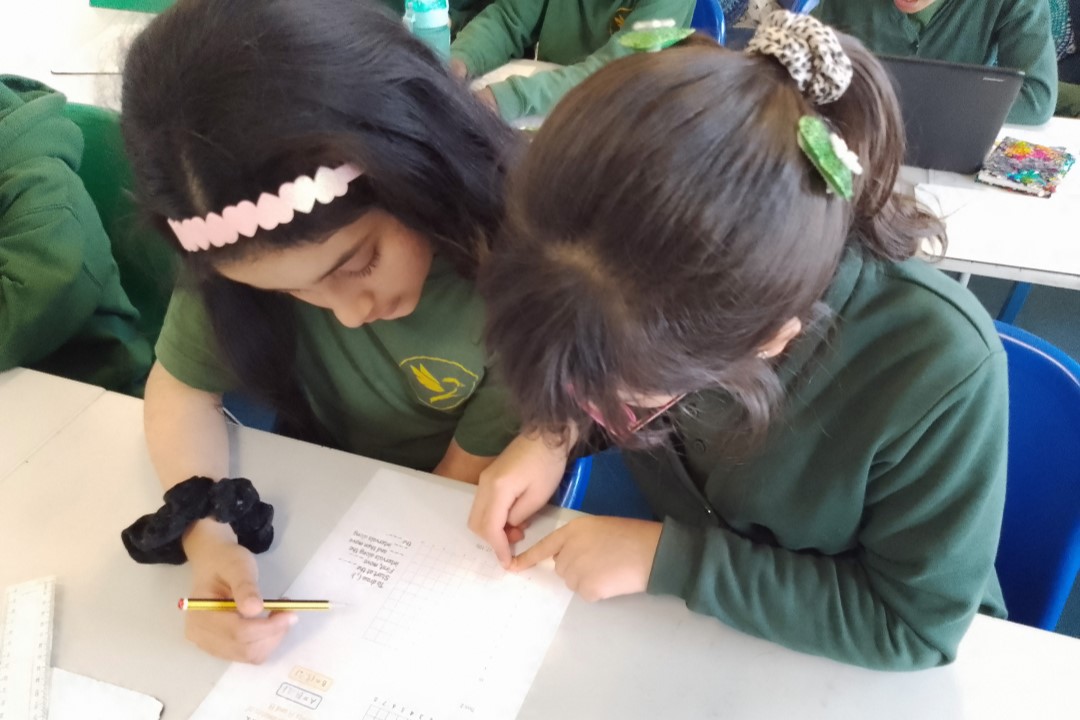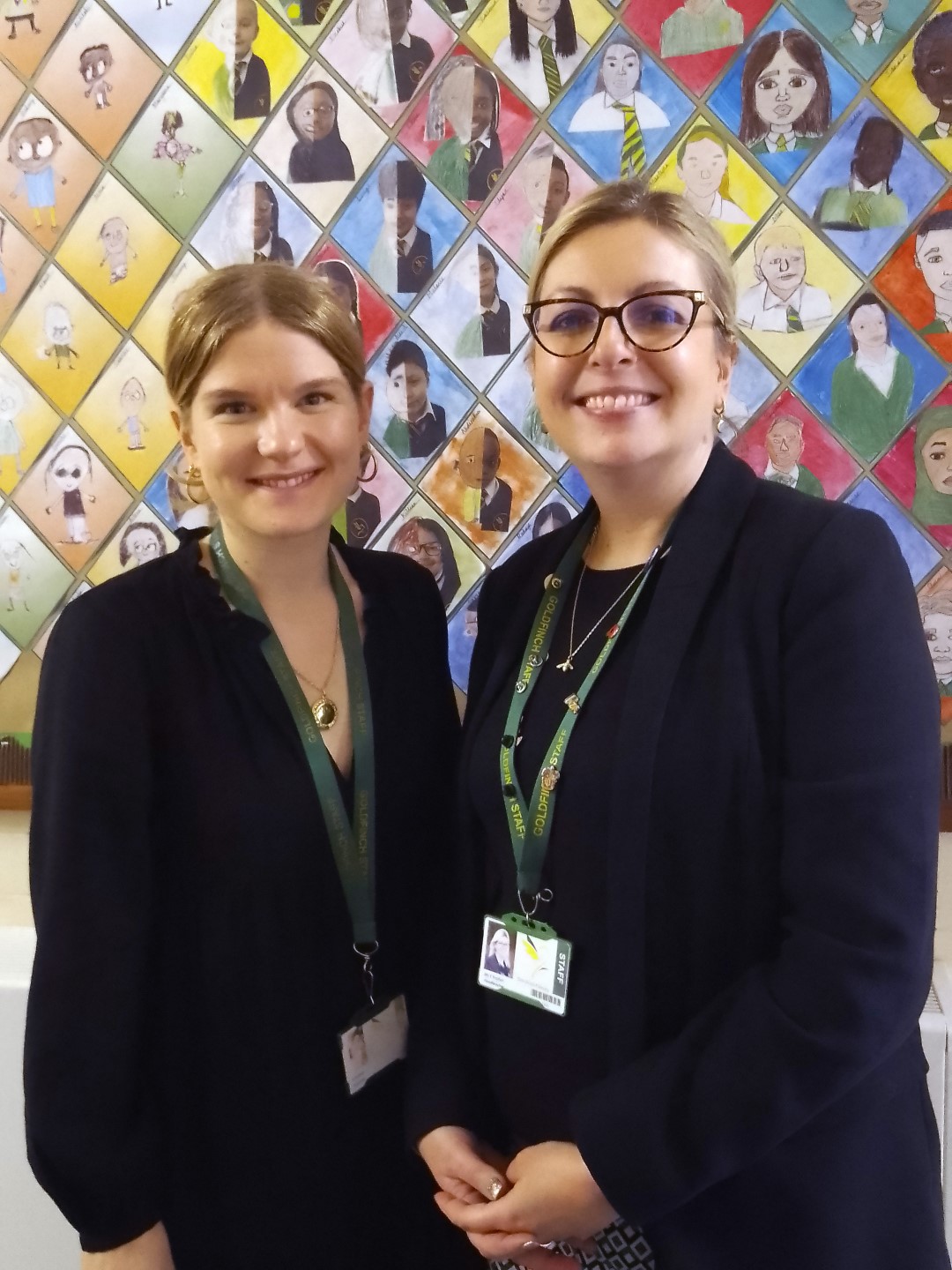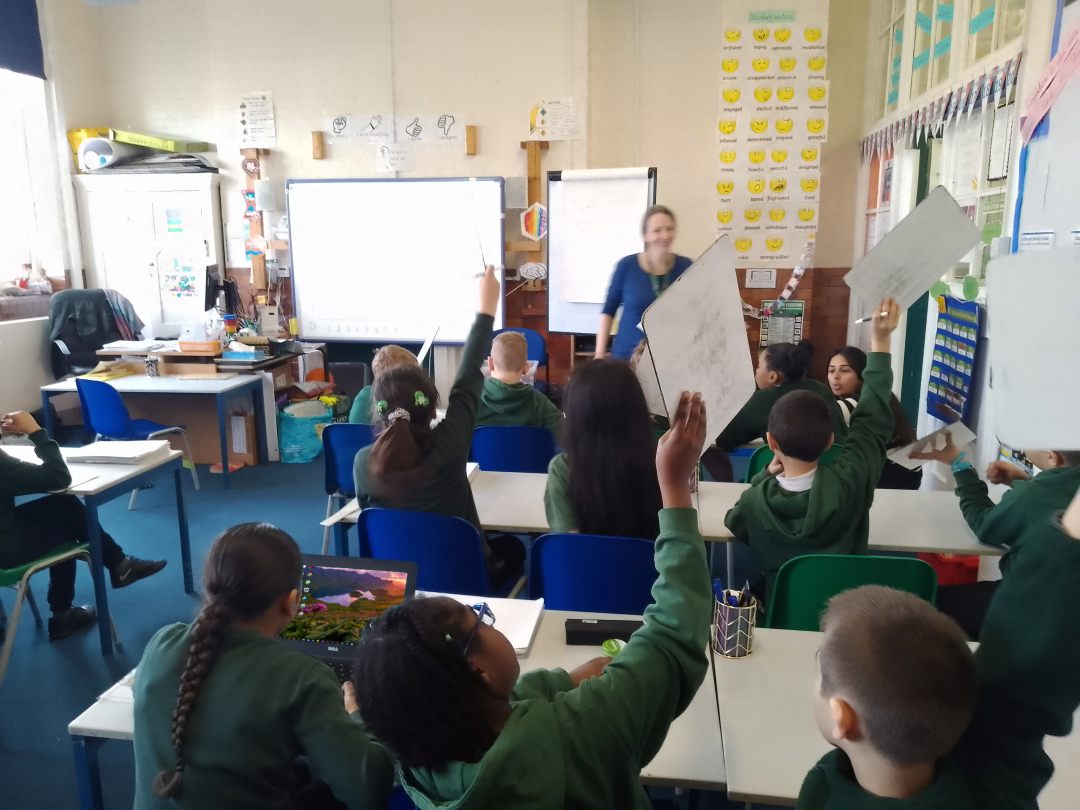How a mastery approach is helping EAL pupils
Embracing teaching for mastery has enabled EAL pupils to engage fully in maths lessons, says headteacher
19/04/2023

Goldfinch Primary School, in Streatham, London, has up to 80% of pupils with English as an Additional Language (EAL) at any time. Five years after introducing teaching for mastery, Head of School, Emilie Haston, is convinced that developing this approach has supported the learning of all pupils, but has had a particularly significant impact on EAL pupils in maths. Sue Evans, NCETM Assistant Director for Primary, visited Emilie at the school to find out just why mastery is having such an impact.
A clear vision
Emilie made a decision to adopt a mastery approach soon after she joined the school in 2016. She quickly identified that significant changes were needed in the way that maths was taught, and an Ofsted inspection shortly afterwards confirmed this. She was clear about her vision for pupils, which partly stemmed from her own negative experiences of learning maths.
“I hated maths. It was like learning a recipe, rather than understanding mathematical concepts and making connections between them. I wanted maths to be accessible for all.”
Support from the Maths Hub
Emilie sought advice from her local Maths Hub, London South West, and visiting mastery lessons convinced her that this approach had the potential to help her realise her vision. It was also consistent with EAL advice.
“Some of the good practices around EAL were what we were hearing from the Maths Hub. That ‘sung’ to me: ‘This is what we need!’”
Some of the mastery practices that appealed to her because they would support all pupils, especially those with EAL, included:
- the teaching of precise mathematical language
- the use of concrete and pictorial representations to explore concepts
- planning for small steps in learning
- providing sufficient practice to allow children to learn and embed key facts.
Systems of professional development
Emilie knew professional development was going to be key in implementing a new approach. She acknowledges that developing teaching for mastery has not been a ‘quick fix’, but making the most of the opportunities offered by the Maths Hub is enabling sustainable change to take place. Teachers attend Specialist Knowledge for Teaching Mathematics (SKTM) Work Groups, and the school has become part of the Teaching for Mastery Programme.
Emilie has also encouraged the school’s maths lead, Ellie Roberts, to set up systems that facilitate CPD within the school to embed teaching for mastery. Ellie regularly spends time supporting teachers to use the NCETM Curriculum Prioritisation materials to plan and sequence lessons. She emphasises that these materials also support teachers to develop their subject knowledge.
“I’ve never used another resource that has taught me so much as a teacher.”
Through collaborative working, teachers also support each other to develop. Working across year groups in ‘triads’, they have regular opportunities to observe each other informally and reflect on the impact of changes to practice. As an Early Career Teacher, Year 4 teacher Hannah tells me that working in her triad, together with the support she has had from Ellie, has really developed her confidence. It certainly seems, from watching her lesson, that this is having a positive impact on the learning in her class. On my visit to her Year 4 lesson, two other teachers are observing. Occasionally they provide support to pupils, but mostly they watch and make notes, ready for an informal discussion later.
Hannah is working hard to develop the children’s language. There is an expectation that children will talk about the maths, and Hannah has clearly spent time developing strategies to enable this to happen, and to develop pupils’ oracy.
Mathematical vocabulary
The key mathematical vocabulary pupils will need to explain their thinking about the topic – coordinates – is clearly displayed on the board. This vocabulary has been introduced in previous lessons, but Hannah provides further practice for pupils to become fluent. She uses an ‘I say, you say’ strategy, pointing to herself as she says, slowly and clearly, “origin”, and then pointing to the class who quickly respond, repeating back, “origin”. After repeating important words several times, pupils’ pronunciation is clearer, and I sense their confidence growing. Hannah also indicates the position of the origin on the grid that is displayed, to remind pupils of its meaning. She uses gestures to support understanding of other relevant vocabulary, placing her arm horizontally as she says ‘x axis’ and vertically as she says ‘y axis’. Later she uses her hands to make the shape of brackets when the pupils are writing coordinates, saying “brackets” as she does so.
After ensuring that pupils are confident with the vocabulary, Hannah provides opportunities for them to talk to a partner before sharing their ideas with the class. She asks them to look at the grid on the board for a moment, and then tell their partner what they notice. Before they begin to discuss their ideas, she models paired talk using a generic sentence opener: “I notice that…”, to help pupils structure their discussion and speak in full sentences. By working in this way, not only has Hannah given the pupils support with language, but she has ensured that the access point of the lesson is one that will enable ALL pupils to feel confident – an important principle of teaching for mastery. As soon as the paired discussion begins, it is apparent that pupils are used to discussing their thoughts, quickly pointing at the board and talking about what they notice. Hannah encourages them saying, “I’m hearing some fantastic vocabulary!” After the paired talk, lots of hands go up, with pupils eager to share their discussions with the class. Hannah allows several pupils to share their thoughts, and encourages others to add to what has been shared, so that explanations become more precise.
Later in the lesson, when Hannah puts an incorrect example of coordinates on the board, the pupils are very quick to point out the mistake! Rather than being content with the pupils spotting the error, Hannah asks them to explain why it is wrong, and how it can be corrected. Because the children have been offered the appropriate language, as well as having a good understanding of the topic, they can articulate why the coordinate is wrong, and how it should be corrected.
Input from teaching assistants
But it’s not just the teachers who benefit from professional development. Faye, a teaching assistant of 10 years, enthusiastically tells me about training she has had from Ellie, and the impact this has had on children’s learning. She has become more aware of the difficulties that pupils with EAL might have, such as confusing “some” and “sum”, so is more careful to ensure that these words are understood. She herself has learnt – and now teaches – specific vocabulary such as ‘minuend’ and ‘subtrahend’. She is clear about the benefits of the vocabulary being used consistently across school:
“It frees up the children to access the learning – to explain. When they explain, you can see the confidence!”
What do pupils think?
Pupils tell me they love maths! They explain that it’s good to work hard at maths at school, and that practising things like times tables – “so you don’t forget” – is important. They feel that everyone at Goldfinch does work hard, including the teachers! They firmly believe that everyone can learn maths and say that teachers are always ready to help pupils who find it more difficult. One Year 5 pupil tells me that there are many ways pupils who are struggling can get support, including from their friends as well as their teachers. It certainly seems that teaching for mastery at Goldfinch Primary School is helping realise Emilie’s vision.
<p>Interested in teaching for mastery?</p>
<p>Find out more about teaching for mastery, and how you or your school can get involved.</p>
Find out more
